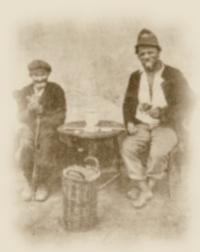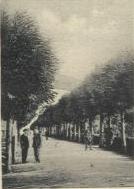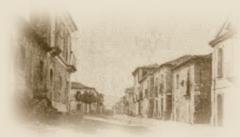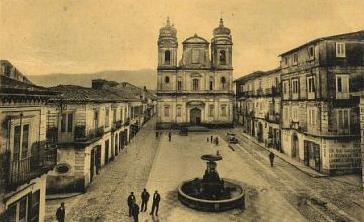|
|
|
|
|||
Now a bit of History!
Origin
The birth of Cittanova can be traced back to the 12th August 1618 when the "New Hamlet of
Curtuladi" was created. Later it was renamed Casalnuovo and became the new settlement centre for
the population of all the surrounding villages destroyed by the earthquake of 1616. The new town was
built on land reclaimed from the former estate of the Grimaldi's of Gerace. The settlers
erected several churches and, in 1728 also a convent. 
"On the 5th of February in a short time the forces of nature destroyed the product of years of hard work and turned the tranquil scenery into mourning. The churches, the rich buildings, the humble houses became in an instant fatal preys of an earthquake which confused and razed everything to the ground. Among the many lives lost they also lamented the loss of the Princess of Gerace who was a kind and honest women loved and admired by everyone. (Chronicles of the times)." Paleoseismology along the Cittanova fault: Implications for seismotectonics and earthquake recurrence in Calabria (southern Italy) (Paolo Galli and Vittorio Bosi)
On the 19th January 1807, the French declared Casalnuovo an administrative regional centre with
jurisdiction over Radicena, Jatrinoli and San Martino. Cittanova, up until the opening of the Rosarno – Gioiosa Jonica freeway (connecting the Ionian and Tyrrhenian seas), has always been an obligatory thoroughfare and a centre of exchange for trade, owing to its location on the main road route of the transport network. In fact, the original town plan of the 1700's, is characterized by (translation by Martino De Marco)
Nativo di San Martino (Reggio Calabria) e residente in Adelaide, dove ha conseguito una laurea in lettere, Martino De Marco esercita la professione di traduttore ed interprete. Appassionato della sua "Piccola Patria" lontana, De Marco da anni ha voluto conoscere meglio
la Calabria, facendo anche varie ricerche in internet. Il primo luglio 2005 è stato presentato in Adelaide la versione in inglese del romanzo, "Valpatri House" di Nadia Crucitti, tradotta appunto da De Marco e stampata localmente in tiratura ridottissima. Il lancio di questo "atto di affetto" e disponibilità professionale è stato fatto nel corso di una serata culturale organizzata per l'occasione. Ha presentato il libro la dottoressa Maria Grazia Re, direttrice didattica del Consolato d'Italia, alla presenza di personalità del mondo della cultura, delle istituzioni e dell'associazionismo locale. |
This document was created by Franco Politi - Tutti i diritti riservati.
 The cities of Reggio Calabria and Messina in Sicily were also
destroyed and thousand were killed. In the six weeks between the 5th February and 27th March there
were more sharp earthquakes, four of exceptional force that caused wide spread destruction from the
Northern Aspromonte mountains down to Catanzaro. In Casalnuovo despite the wide streets and the low buildings 2017 people died.
The cities of Reggio Calabria and Messina in Sicily were also
destroyed and thousand were killed. In the six weeks between the 5th February and 27th March there
were more sharp earthquakes, four of exceptional force that caused wide spread destruction from the
Northern Aspromonte mountains down to Catanzaro. In Casalnuovo despite the wide streets and the low buildings 2017 people died.
 The town is made up of two sections, one which was built after the earthquake of 1616 and the other part which was developed after the earthquake of 1783.
The town is made up of two sections, one which was built after the earthquake of 1616 and the other part which was developed after the earthquake of 1783.
 The old route coming from the Mercante pass, runs along the top of Colle Palermo and then along the bridge which crosses to the west of Fosso Cavaliere, within the proximity of "Fontana dello Schioppo" and leads to the main road of Via Garibaldi. This route divides into two, upon which converge the roads from Polistena and Terranova, the first being with Via Fondaco and the second identifiable with Via Olmo.
The old route coming from the Mercante pass, runs along the top of Colle Palermo and then along the bridge which crosses to the west of Fosso Cavaliere, within the proximity of "Fontana dello Schioppo" and leads to the main road of Via Garibaldi. This route divides into two, upon which converge the roads from Polistena and Terranova, the first being with Via Fondaco and the second identifiable with Via Olmo.
 The road from Locri Epizephiri, which is parallel to the route from the Mercante (the current urban section of provincial road – former SS 111) transforms from a Y shape to an X. At the main road of Via Garibaldi, a transversal counter axis is created (Via Roma); the linking
perimeter roads of Via Tirreno and Via Nazionale are characterized by a series of small noble style buildings. The centre of the town moves then slightly to the east towards Piazza Garibaldi.
The road from Locri Epizephiri, which is parallel to the route from the Mercante (the current urban section of provincial road – former SS 111) transforms from a Y shape to an X. At the main road of Via Garibaldi, a transversal counter axis is created (Via Roma); the linking
perimeter roads of Via Tirreno and Via Nazionale are characterized by a series of small noble style buildings. The centre of the town moves then slightly to the east towards Piazza Garibaldi.